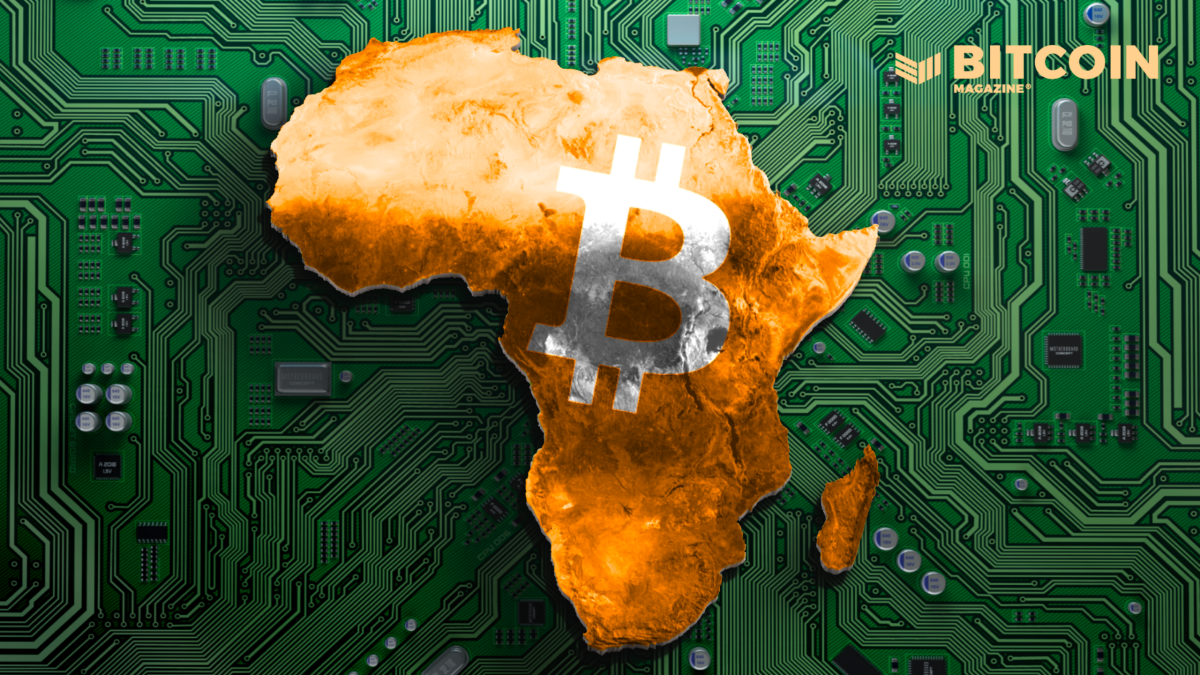Month: August 2024
94% of Bitcoin’s Supply Has Now Been Issued
A milestone has been reached in Bitcoin’s supply schedule – 94% of the total Bitcoin supply has now been issued through mining. Out of a hard-capped total of 21 million BTC, over 19.74 million have been mined so far.
Bitcoin’s supply is issued through mining, where computers validate transactions and receive Bitcoin as a reward. The initial mining subsidy was 50 BTC per block, which halves every 210,000 blocks or roughly every 4 years.
This event called the Bitcoin halving, ensures a predictable, diminishing inflation rate as the supply grows. There have been three halvings, cutting the subsidy from 50 to 25 to 12.5 to the current 6.25 BTC.
The halvings combined with increasing difficulty and competition mean fewer and fewer new bitcoin enters circulation over time. Out of the maximum 21 million BTC, over 94% or 19,741,655 BTC have been mined since Bitcoin’s launch in 2009.
That leaves only around 1.26 million BTC to be issued. With the current 6.25 BTC block reward, the remaining supply will take over 100 more years to fully mint. Experts estimate 99.9% of all bitcoin will be mined by 2140, with miners mostly earning fees rather than subsidies by then.
This controlled supply schedule is a key aspect of Bitcoin’s value proposition. As the issuance slows and demand grows, Bitcoin is designed to become scarcer over time – an attractive attribute for investors facing unlimited fiat money printing and currency debasement.
Bearish dollar momentum building; sterling hits one-month high
Post Content
Yuan up as dollar wobbles ahead of Jackson Hole
Post Content
Next Bank of Japan intervention may be to sell yen :Mike Dolan
Post Content
Bitcoin rises 5.17% to $59,609
Post Content
Are Bitcoin Whales Buying The Dip?
Bitcoin’s recent price volatility has led many to wonder if large-scale bitcoin hodlers are taking advantage of price dips to accumulate more bitcoin. While some metrics may initially suggest an increase in long-term holdings, a closer examination reveals a more nuanced story, especially after the current prolonged period of choppy consolidation.
Are Long-Term Holders Accumulating?
Upon initial observation, long-term Bitcoin holders are seemingly increasing their holdings. According to the Long Term Holder Supply, since July 30th, the amount of BTC held by long-term holders has increased from 14.86 million to 15.36 million BTC. This surge of around 500,000 BTC has led some to believe that long-term holders are aggressively buying the dip, potentially setting the stage for the next significant price rally.
Figure 1: Long Term Holder Supply of BTC increased by 500,000 as the bitcoin price dipped and rebounded. Access Live Chart 🔍
However, this interpretation might be misleading. Long-term holders are defined as wallets that have held BTC for 155 days or more. This week we’ve just surpassed 155 days since our most recent all-time high. Therefore, it is likely that many short-term holders from that period have simply transitioned into the long-term category without any new accumulation occurring. These investors are now holding onto their BTC, hoping for higher prices. So in isolation, this chart does not necessarily indicate new buying activity from established market participants.
Coin Days Destroyed: A Contradictory Indicator
To further explore the behavior of long-term holders, we can examine the Supply Adjusted Coin Days Destroyed metric over the recent 155-day period. This metric measures the velocity of coin movement, giving more weight to coins that have been held for extended periods. A spike in this metric could indicate that long-term holders possessing a substantial amount of bitcoin are moving their coins, likely indicating more selling as opposed to accumulating.
Figure 2: Supply Adjusted CDD (90dma) at levels typically reached at bull-cycle peaks. Access Live Chart 🔍
Recently, we have seen a significant increase in this data, suggesting that long-term holders might be distributing rather than accumulating BTC. However, this spike is primarily skewed by a single massive transaction of around 140,000 BTC from a known Mt. Gox wallet on May 28, 2024. When we exclude this outlier, the data appears much more typical for this stage in the market cycle, comparable to periods in late 2016 and early 2017 or mid-2019 to early 2020.
Figure 3: Mt. Gox repayment wallet movement has skewed CDD data. Current profit taking is at typical levels. Access Live Chart 🔍
The Behavior of Whale Wallets
To determine whether whales are buying or selling bitcoin, analyzing wallets holding substantial amounts of coins is crucial. By examining wallets with at least 10 BTC (minimum of ~$600,000 at current prices), we can gauge the actions of significant market participants.
Since Bitcoin’s peak earlier this year, the number of wallets holding at least 10 BTC has slightly increased. Similarly, the number of wallets holding 100 BTC or more has also seen a modest rise. Considering the minimum threshold to be included in these charts, the amount of bitcoin accumulated by wallets holding between 10 and 999 BTC could account for tens of thousands of coins bought since our most recent all-time high.
Figure 4: 10+ BTC wallets have seen a rise in the last few weeks after a substantial decrease on our run-up to a new ATH. Access Live Chart 🔍
However, the trend reverses when we look at larger wallets holding 1,000 BTC or more. The number of these large wallets has decreased slightly, indicating that some major holders might be distributing their BTC. The most notable change is in wallets holding 10,000 BTC or more, which have decreased from 109 to 104 in the past months. This suggests that some of the largest bitcoin holders are likely taking some profit or redistributing their holdings across smaller wallets. However, considering most of these extremely large wallets will typically be exchanges or other centralized wallets it’s more likely these are a collection of trader and investor coins as opposed to any one individual or group.
Figure 5: 10,000+ BTC wallets have steadily declined since the bear cycle lows and have not seen sustained buying since. Access Live Chart 🔍
The Role of ETFs and Institutional Inflows
Since reaching a peak of $60.8 billion in assets under management (AUM) on March 14th, the BTC ETFs have seen an AUM decrease of around $6 billion, however when taking into account the price decrease of bitcoin since our all-time high, this roughly equates to an increase of approximately 85,000 BTC. While this is positive, the increase has only negated the amount of newly mined Bitcoin during the same period, also 85,000 BTC. ETFs have helped reduce selling pressure from miners and potentially from large holders but haven’t significantly accumulated enough to impact the price positively.
Figure 6: BTC ETF’s have only increased their bitcoin holdings enough to negate newly minted bitcoin since our all-time high.
Retail Interest on the Rise
Interestingly, while big holders appear to be selling BTC, there has been a significant increase in smaller wallets – those holding between 0.01 and 10 BTC. These smaller wallets have added tens of thousands of BTC, showing increased interest from retail investors. There’s been a net change of around 60,000 bitcoin from 10+ BTC wallets to smaller than 10 BTC. This may seem alarming, but considering we typically see millions of bitcoin switch from large and long-term holders to new market participants throughout an entire bull cycle, this is not currently any cause for concern.
Figure 7: Wallets between 0.01 BTC and 10 BTC have accumulated all larger wallet selling, approximately 60,000 BTC. Access Live Chart 🔍
Conclusion
The narrative that whales have been accumulating bitcoin on dips and throughout this period of chopsolidation does not seem to be the case. While long-term holder supply metrics initially appear bullish, they largely reflect the transition of short-term holders into the long-term category rather than new accumulation.
The increase in retail holdings and the stabilizing influence of ETFs could provide a strong foundation for future price appreciation, especially if we see renewed institutional interest and continued retail inflows post halving, but is currently contributing little to any Bitcoin price appreciation.
The real question is whether the current distribution phase seizes and sets the stage for a new round of accumulation, which could propel Bitcoin to new highs in the coming months, or if this flow of old coins to newer participants continues and likely suppresses the potential upside for the remainder of our bull cycle.
🎥 For a more in-depth look into this topic, check out our recent YouTube video here: Are Bitcoin Whales Still Buying?
And don’t forget to check out our other most recent YouTube video here, discussing how we can potentially improve one of the best bitcoin metrics:
Bitcoin Non-Profit ₿trust Announces Q3 Grants For Open-Source Developers
₿trust, an initiative committed to supporting open-source Bitcoin developers based in the Global South, has announced the recipients of its Q3 Starter Grants and the new members of its ₿trust Open-Source Cohort.
1/ 📢 Announcing the ₿trust Q3 Grants!
We’re excited to announce the recipients of our Q3, 2024 ₿trust Starter Grants and the Open-Source Cohort Members! 🚀
A key part of our mission of empowering talented Global South devs to contribute to Bitcoin’s open-source ecosystem. pic.twitter.com/FnlgPGJoHu
— Btrust (@btrustteam) August 16, 2024
The Starter Grants, which provide full-time funding to Bitcoin software engineers, are a sign of ₿trust’s dedication to expanding the number of open-source Bitcoin contributors from regions such as Africa, MENA, Southeast Asia and Latin America.
Each recipient receives six months of support, including a stipend paid in bitcoin, technical guidance and support in developing proposals to to join the ₿trust Open-Source Cohort with long-term funding.
Why ₿trust Starter Grants Matter
₿trust Starter Grants provide financial stability to talented open source developers, which helps them focus on their work without financial stress. They also provide mentorship and support aimed to help the developers establish long-term, sustainable careers in the Bitcoin space.
“Through these grants, we can tangibly contribute to decentralizing Bitcoin open source development by introducing these developers with diverse perspectives to strengthen the resilience of the Bitcoin network,” said ₿trust Interim CEO Abubakar Nur Khalil in a press release shared with Bitcoin Magazine.
The Starter Grants also provide a pathway to the ₿trust Open-Source Cohort. Developers in the ₿trust Open-Source Cohort receive mentorship, professional development and extended financial support while contributing to open-source initiatives.
“The intention is to make grantees’ Bitcoin open-source careers sustainable, and in addition to the long-term financial support we provide, create a supportive environment for them to thrive and feel a larger sense of community,” said Nur Khalil.
Starter Grant Recipients
The recipients of Q3 2024 Starter Grants are as follows:
Enigbe Ochekliye
Ochekliye has over two years of experience in backend engineering and has worked on projects including Galoy’s Stablesats and Easepay’s payment service provider (PSP).
Ochekliye will contribute to The Lightning Development Kit’s rust-lightning through this grant. She will also work to improve the onboarding process for new contributors to Bitcoin open source projects.
Enigbe Ochekliye
Tobechi Chukwuleta
Chukwuleta is a highly-experienced backend developer with a background in data analysis. He has also been instrumental in enhancing BTCPay Server functionality, especially as it pertains to the system’s multisig capabilities and plugin development.
The funds from his Starter Grant will support him as he continues to advance BTCPay Server’s store functionality as well as the platform’s modularity.
Tobechi Chukwuleta
Kelvin Isievwore
Isievwore is currently contributing to Bitcoin open source projects such as Polar and LND. While working under the Starter Grant, Isievwore will focus on streamlining the testing and development process for engineers building on Lightning.
Kelvin Isievwore
New Members Of The Open-Source Cohort
The new members of the ₿trust Open-Source Cohort are as follows:
Abubakar Sadiq Ismail
Sadiq Ismail is a Nigerian Bitcoin Core contributor who is actively involved in optimizing the Bitcoin protocol. He works on critical areas of Bitcoin Core such as long-term fee estimation and transaction analysis.
Sadiq Ismail’s work on Mempool fee estimation analysis showcases his technical abilities, which helps to improve the scalability and usability of Bitcoin. While a part of the cohort, he will continue this work, as he refines his abilities to contribute to the Bitcoin ecosystem.
Abubakar Sadiq Ismail
Duncan Dean
Dean is a Lightning contributor from South Africa. He has been deeply involved with developing the highly-modular Lightning library, rust-lightning.
Dean also actively participates in projects like ldk-review-club and lndk, where he has contributed to improving continuous integration (CI) actions and helped maintain the robustness of the codebase. While in the cohort, Dean aims to strengthen his abilities to contribute to Bitcoin and Lightning.
Duncan Dean
Oghenovo Usiwoma
Usiwoma is a Bitcoin Core contributor based in Nigeria who has been with ₿trust since 2023. Under the ₿trust Starter Grant he focused on advancing Silent Payments functionality.
As part of the ₿trust Open-Source Cohort, he will work on introducing new key formats and descriptors for Silent Payments in Bitcoin Core, continuing his work of enhancing the privacy and scalability features of Bitcoin.
Oghenovo Usiwoma
Applying For A ₿trust Grant
Developers based in Africa, the MENA region, Southeast Asia and Latin America can apply for ₿trust grants.
Developers in other regions of the Global South will also be considered for grants on a case-by-case basis, predominantly based on their proof of work in the Bitcoin space.
Apply for a ₿trust Starter Grant via this ₿trust link.
Institutional Inflows to Bitcoin ETFs Show Promising Indicator, Says Coinbase Report
Coinbase has reported that updated 2Q 2024 13-F filings indicate a notable increase in institutional inflows into U.S. spot Bitcoin ETFs, which the company views as a “promising indicator” for the Bitcoin market. The 13-F filings, released on August 14, reveal that institutional ownership of these ETFs grew from 21.4% to 24.0% between Q1 and Q2 of 2024.
Significantly, the proportion of ETF shares held by the “investment advisor” category rose from 29.8% to 36.6%, signaling heightened interest from wealth management firms. Notable new holders include Goldman Sachs and Morgan Stanley, who added $412 million and $188 million worth of shares, respectively. Despite Bitcoin’s price drop during the quarter, net inflows into spot Bitcoin ETFs reached $2.4 billion.
“The ETF complex saw net inflows of $2.4B during this period, although the total AUM of spot bitcoin ETFs dropped from $59.3B to $51.8B (due to BTC dropping from $70,700 to $60,300),” Coinbase reported. “We think that the continued ETF inflows during bitcoin’s underperformance may be a promising indicator of sustained interest in crypto from the new pools of capital that the ETFs give access to.”
Coinbase expects this growth to continue as more brokerage houses complete their due diligence on Bitcoin ETFs, particularly among registered investment advisors. However, the report also notes that short-term inflows may be tempered by seasonal factors and current market volatility.
“In our view, it’s likely that we will see the proportion of investment advisor holdings continue to increase as more brokerage houses complete their due diligence on these funds,” the report stated. “We may not immediately see large inflows emerge in the short-term, as soliciting clients may be harder to do during the summer, when more people are on vacation, liquidity tends to be thinner and the price action might be choppy.”
75% of Bitcoin Hasn’t Moved in 6+ Months, Signaling Strong HODLing Trend
Recent data from Bitcoin Magazine Pro shows a significant trend among Bitcoin holders: nearly 75% of all circulating Bitcoin has remained dormant for over six months. This strong HODLing behavior reflects a steadfast belief in Bitcoin’s long-term value, despite market fluctuations.
The “HODL Waves” chart, a tool that visualizes the age of Bitcoins based on when they last moved, illustrates how various groups of holders react to market conditions. The dominance of older coins (those held for 6 months or more) suggests that long-term investors are increasingly holding onto their Bitcoin, possibly anticipating future price increases.
This trend of HODLing is significant because it indicates a reduced supply of Bitcoin available for trading, which could lead to increased price stability or even potential price appreciation as demand grows. The data also highlights the contrast between short-term traders and long-term investors, with the latter group—often considered ‘smart money’—likely to hold their positions during periods of market volatility.
For new Bitcoin investors, this trend emphasizes the potential benefits of adopting a long-term investment strategy. Consistently buying and holding Bitcoin over time, rather than attempting to time the market, aligns with the behavior of those who have historically seen the most significant gains holding Bitcoin.
For more detailed information, insights, and to sign up to access Bitcoin Magazine Pro’s data and analytics, visit the official website here.
Lava Loans Protocol v2: DLC Based Bitcoin Collateralized Loans
The Lava Loans protocol (v2) is a scheme designed by Lava building upon Discreet Log Contracts (DLCs) to facilitate a trustless Bitcoin collateralized loan system. The huge implosion in the market last cycle caused by centralized platforms facilitating Bitcoin backed loans showed that left unchecked, such products and services can present a massive systemic risk to the entire market in the ecosystem.
Lava seeks to provide the same utility users of such centralized platforms sought in a decentralized and atomic fashion, using DLCs.
DLCs, for those unfamiliar with the concept, are a smart contract designed to settle a certain way depending on the outcome of some event outside of the Bitcoin protocol, i.e. the price of Bitcoin, the outcome of a sports game, etc. This is done by depending on an oracle, or a set of multiple oracles, who sign a message attesting to the actual outcome of the real world event. These signed messages are used as the basis for adapter signatures that unlock specific pre-signed transactions that settle the contract a certain way.
The benefit of DLCs is they can be done privately. As long as the oracle(s) publish the keys they will use to sign outcomes for specific events at specific times, any user can take that information and construct pre-signed transactions to settle correctly based on the range of possible outcomes without the oracle ever knowing that a contract exists. The oracle simply publicly broadcasts the signed message at the appropriate time, and that gives both users all the needed information to settle the contract correctly.
Lava is designed to make use of a modified variant of DLCs, in addition to stablecoins on other networks, in order to facilitate a bitcoin collateralized loan that can be entered into atomically and trustlessly (i.e. guaranteeing that the lender cannot gain control of bitcoin without releasing control of the stablecoin to the borrower).
Instantiation
The funding of the DLC is a two step process in the Lava protocol, given the requirement that the stablecoins given in exchange for the collateral being locked in the contract must be atomic. In the first phase, the borrower creates a script that allows them to claim their coin back after a timelock, or allows the lender to complete the funding with a hash preimage and signature from the borrower. They then sign a transaction that moves the coins from this staging address into the DLC. The lender then exchanges a hashlock for use later in the protocol with the borrower.
From this point, the lender needs to fund a similar atomic exchange contract with the borrower on the chain hosting the stablecoin. This contract allows the borrower to claim the stablecoins with the same preimage used to finalize the DLC on Bitcoin, or the lender to reclaim the stablecoins after a timeout. The contract on the alt-chain is also collateralized with extra stablecoins that remain in the contract, and cannot be claimed back by the lender until after the completion of the contract. This will be explained later.
After the setup phase, the borrower releases the preimage to the hashlock, claims the stablecoins, and enables the lender to move the bitcoin from the staging address into a finalized DLC. At this point the contract is active.
Execution
During the lifetime of the contract there are three ways that the loan can be settled, either at expiry or during its lifetime. Firstly, the lender can execute the DLC with the borrower’s adaptor signature, and an attestation of the current price from the oracle(s). Secondly, the borrower can execute with the lender’s adaptor signature and an attestation from the oracle(s). Lastly, the borrower can repay the loan on the alt-chain, enabling them to claim back bitcoin collateral when the lender claims their repayment and stablecoin collateral. All of these execution paths disperse the appropriate amount of bitcoin to both parties based on the market price attested to by the oracle(s).
The repayment path makes use of the second hash preimage that the lender generated during the setup. The DLC script is modified allowing the borrower to claim back the collateral at any time during the contract lifetime as long as they have the preimage to that the lender has generated. On the alt-chain, the stablecoin contract is also established to require the lender to reveal that preimage to claim back their repayment and collateral.
This construction for repayment is added to deal with the incentive where a repayment is made, but the lender does not finalize the repayment because the interest payment on the loan outstanding is greater than the interest that could be earned from them issuing a new loan. This is also the reason that the lender is required to collateralize the alt-chain contract with extra stablecoins, creating an incentive for them to redeem a repayment. Without doing so, they cannot claim the collateral back, thereby creating an incentive for them to honor the repayment and release the bitcoin collateral even when there is a financial incentive due to the interest payments to not do so.
Once the lender releases the preimage to claim back the repayment and the stablecoin collateral, the borrower is then capable of unilaterally spending the DLC output by using the released preimage. This guarantees that the borrower is able to unilaterally reclaim their bitcoin collateral after the lender takes possession of their loan repayment.
Liquidation and Safe Guards
Like the DLC Markets proposal, Lava supports a liquidation procedure. In the case that the oracle attests to a price that is below a pre-defined liquidation level, pre-signed transactions corresponding to the liquidation event can be used by the lender to claim the entirety of the collateral. This is to guarantee that during the event of a massive price swing that lowers the collateral value beyond the loan value, the lender is capable of liquidating it when necessary to cover the stablecoin value the borrower claimed. Otherwise, they could be faced with the risk of waiting until the contract expiry and being stuck with bitcoin that is less valuable than what they have lent out, resulting in a financial loss for the lender.
In addition to the liquidation procedure, there is also an emergency recovery option available long after the contract expiry. During set up signatures for pre-signed transactions long after the contract expiry are exchanged. These are used in the event that the oracle(s) fail to deliver signatures on price attestations, or in the event that the borrower stops cooperating with the lender, or vice versa.
The lender is capable of using one of these to claim the entirety of the bitcoin collateral in the event the oracle(s) don’t attest to the price, or the borrower becomes non-cooperative in that case. This is to ensure that the bitcoin in the DLC is never at risk of being burned. For similar reasons, a transaction timelocked for long after the lender’s is available. This allows the borrower to eventually claim back their collateral if the oracle(s) and lender become unresponsive.
Conclusion
By slightly modifying the DLC protocol to include a basic hashlock, and the introduction of the liquidation mechanism similar to DLC Markets, the Lava protocol has created a variant of DLCs perfectly suited for bitcoin collateralized lending. While the dependence on oracles still exists, like with any DLC protocol or application, the entry and exit of the loan is completely atomic and trustless between the borrower and lender.
This proves an immense amount of value in subtly tweaking existing Bitcoin contract structures to fit specific use cases, and offers a pathway to meeting a widely demanded need in the ecosystem that does not present the systemic risk of instability that centralized equivalents created in the past.









